In the middle of the Atlantic Ocean are nine Portuguese islands that make up the Azores archipelago. With rugged coastlines offering unforgettable views, lake-filled calderas (craters), and majestic volcanic mountains, there is something for everyone to enjoy.
São Miguel
São Miguel, the biggest island of the archipelago, has many lakes and craters to explore. The view of the twin blue and green caldera lakes (Sete Cidades) from Vista do Rei on the crater’s rim is nothing short of spectacular.
Sete Cidades, São Miguel Island
Faial
Many blue hydrangeas inhabit Faial, known as the Blue Island, along its countryside and urban centers. Horta’s Marina is the main harbour of the Azores and the fourth most visited marina in the world.
Pico
The mountain that rises 2,351 meters (7,713 feet) above sea level gives Pico, the second-largest island, its name. The dormant volcano, Mount Pico, is not only the highest mountain in the Azores, but the highest mountain in Portugal. From atop, you can see the islands of Faial, São Jorge, Graciosa and Terceira.
Mount Pico, Pico Island
Terceira
Terceira has the oldest city in the Azores – Angra do Heroismo. The city, located in an inlet, is the historical capital of the archipelago and UNESCO World Heritage Site, Supreme Court, and two air bases.
Angra do Heroísmo, Terceira Island
Santa Maria
Santa Maria is the oldest island in the Azores and has many amazing geological formations, picturesque hillsides, and beautiful white sand beaches. A view from Pico Alto, the highest mountain on the Island.
São Jorge
São Jorge, known as the Brown Island, has steep black cliffs that fall dramatically into the ocean with rolling hills carpeted in dense clusters of ferns and grasslands. Inland you can find spectacular valleys and peaks, created by ancient volcanic eruptions, that offer stunning scenery.
Graciosa
Graciosa, known as the White Island, was classified by UNESCO as a Biosphere Reserve with its infamous Caldera volcano, boiler, and vegetation.
Caldera Volcano, Graciosa Island
Flores
Flores, the “Island of Flowers,” boasts a trademark of hydrangeas, waterfalls, lakes, cliffs, and valleys. Seven lakes (Sete Lagoas) with names connected to their features and landscapes are located inside the caldera of Flores.
Corvo
UNESCO considers Corvo, known as the Island of the Crow, the smallest island in the Azores, as a World Biosphere Reserve. A boat trip around the island will offer an unforgettable experience to see the landscape, a large number of migratory seabirds and even whales or dolphins.
Corvo Island
In 2017, Lonely Planet chose the Azores as one of the best regions to visit, and in 2016, National Geographic named it the most beautiful place in the world to visit. No vacation to Portugal is complete without a journey across the Atlantic to see the beautiful Azorean islands.
Go to Visit Azores for information on where to stay, eat, and things to do.
Bon voyage,
Ilda
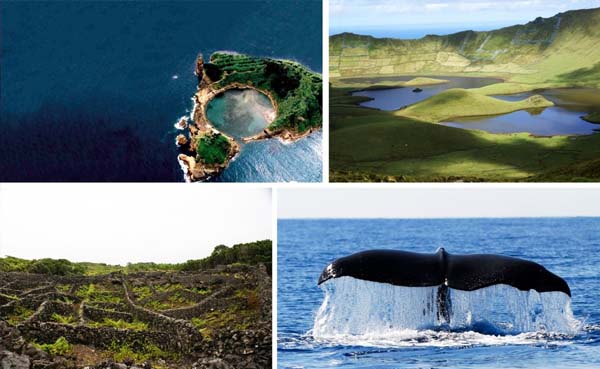
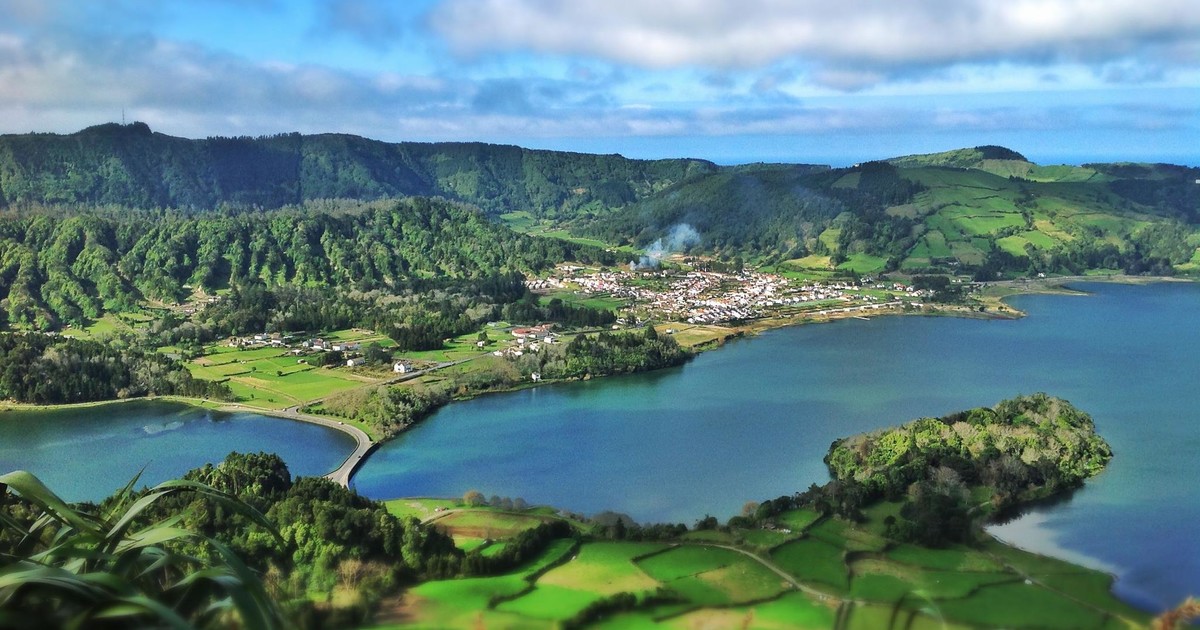
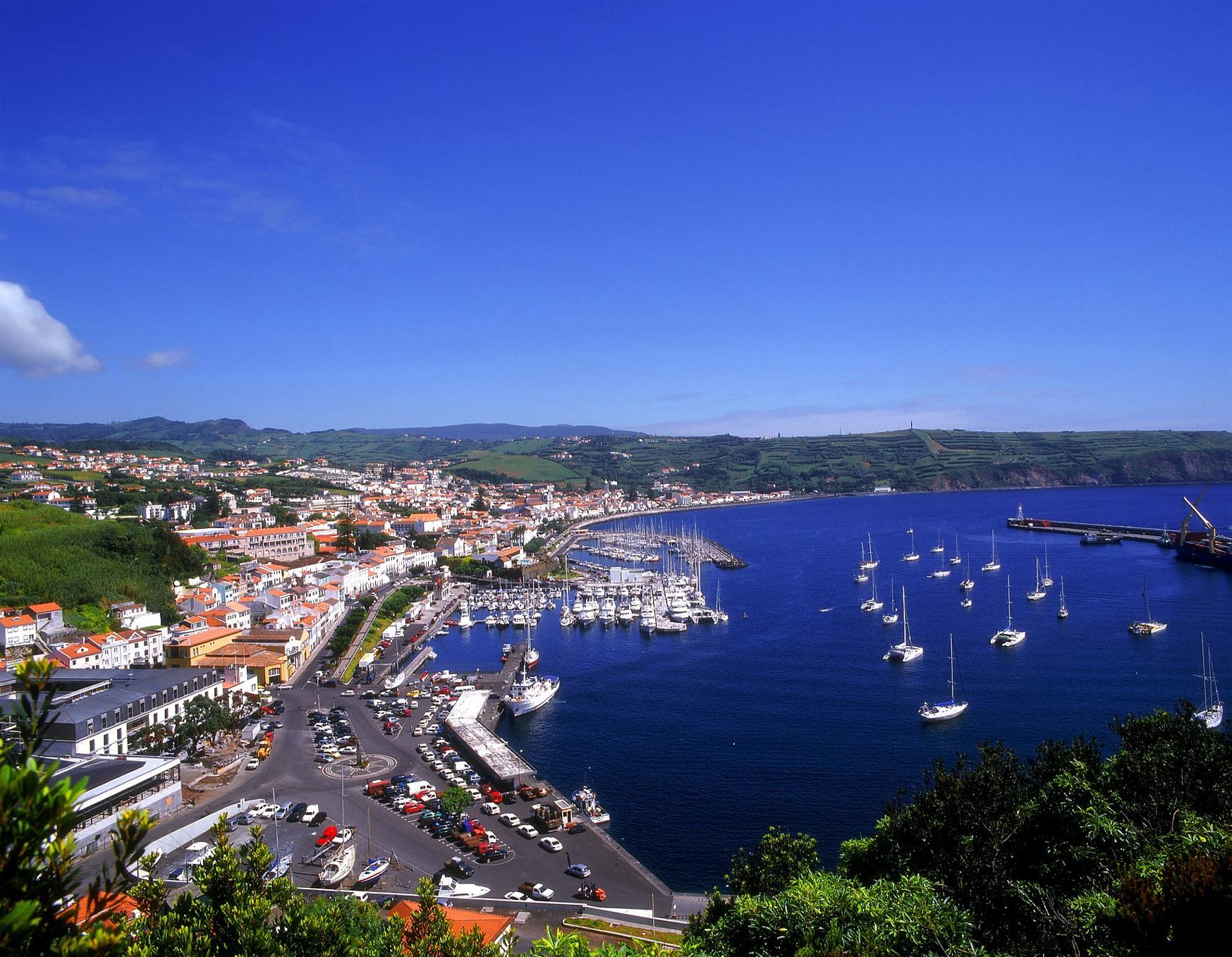
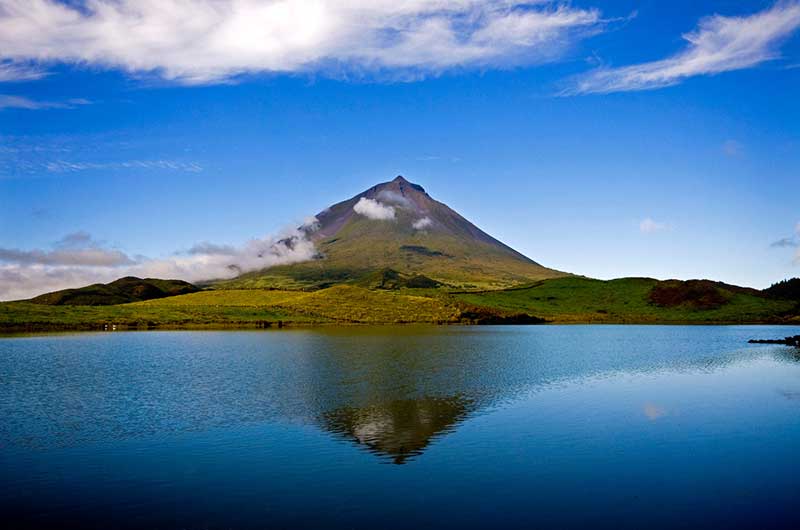
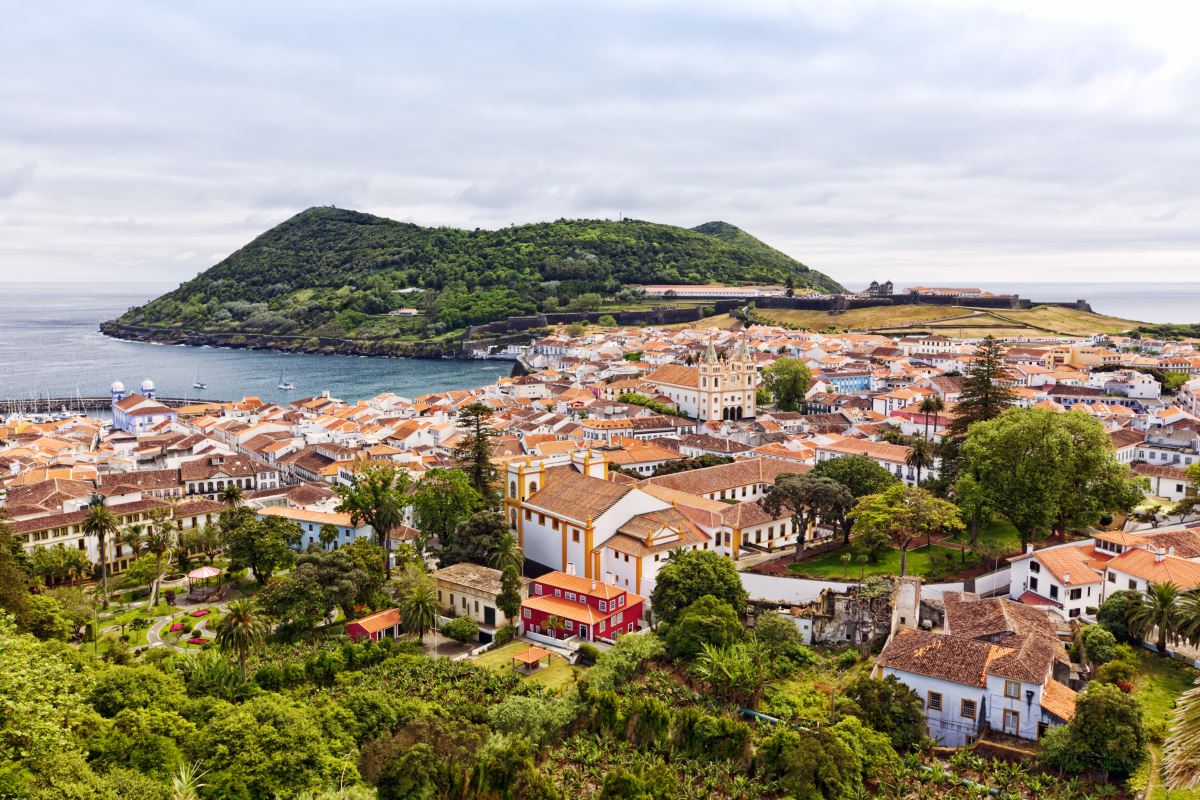
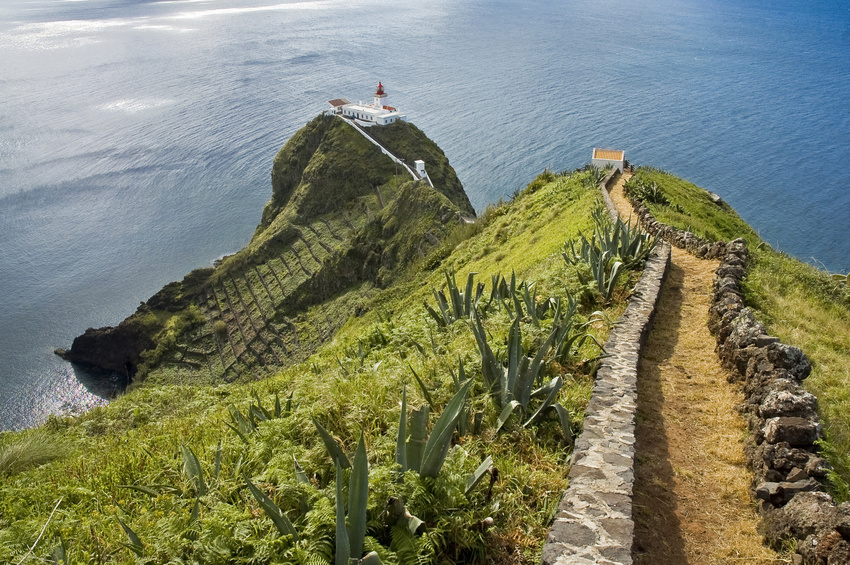
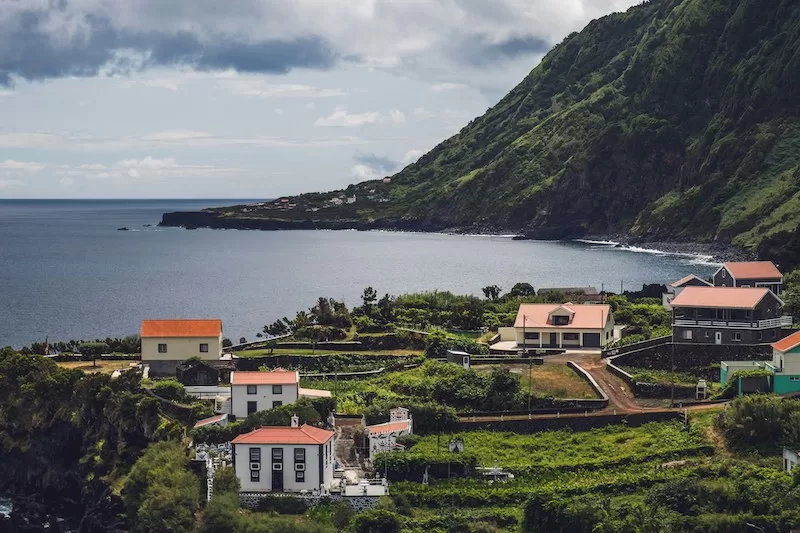
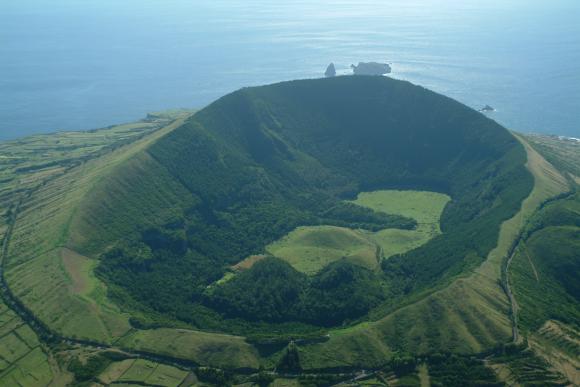
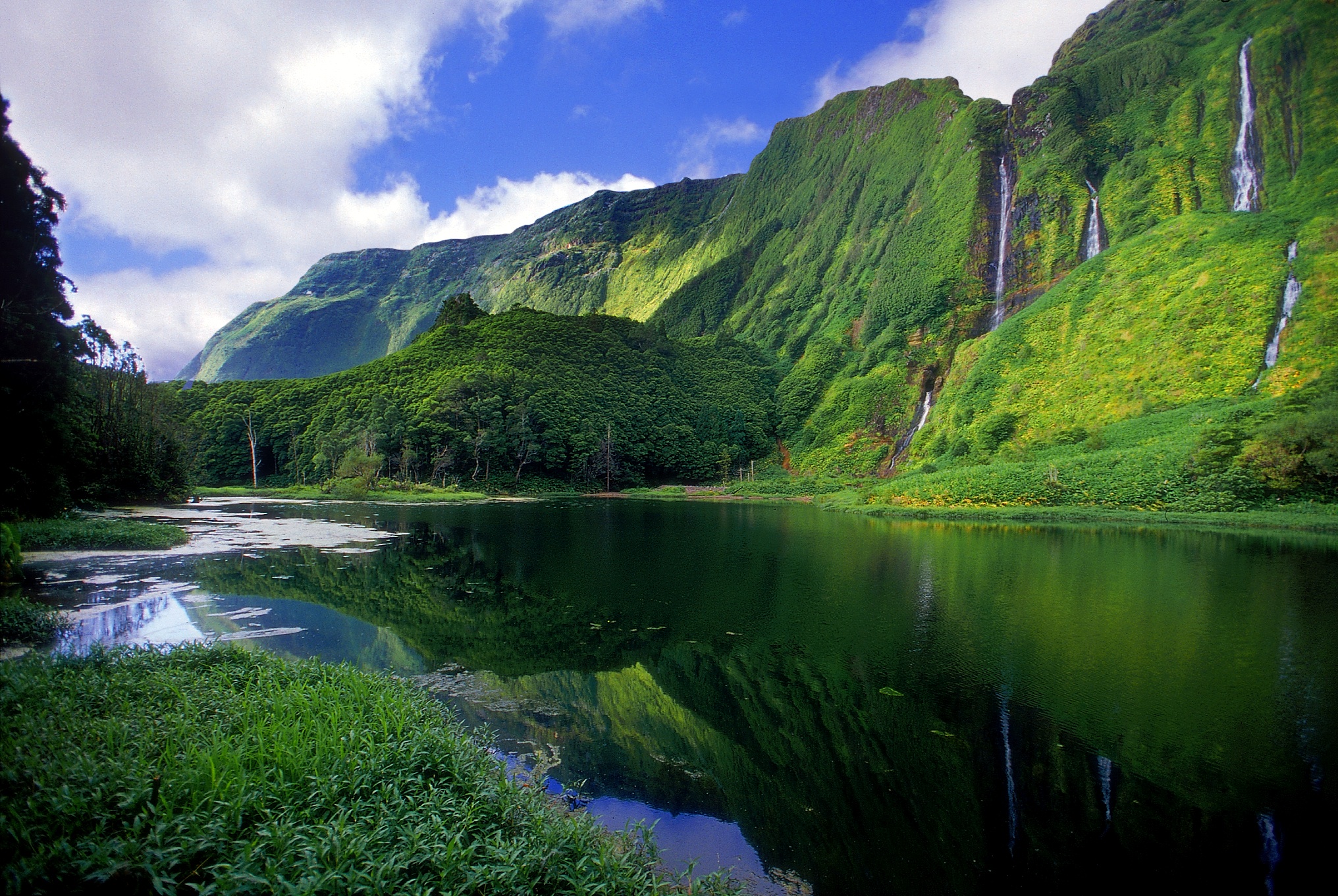
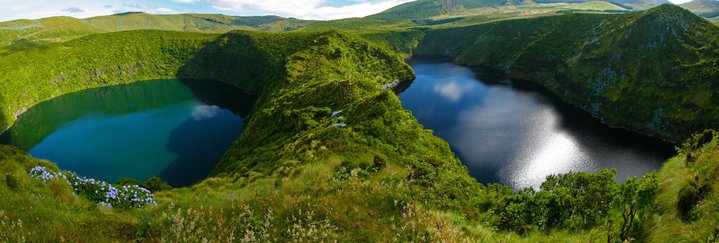
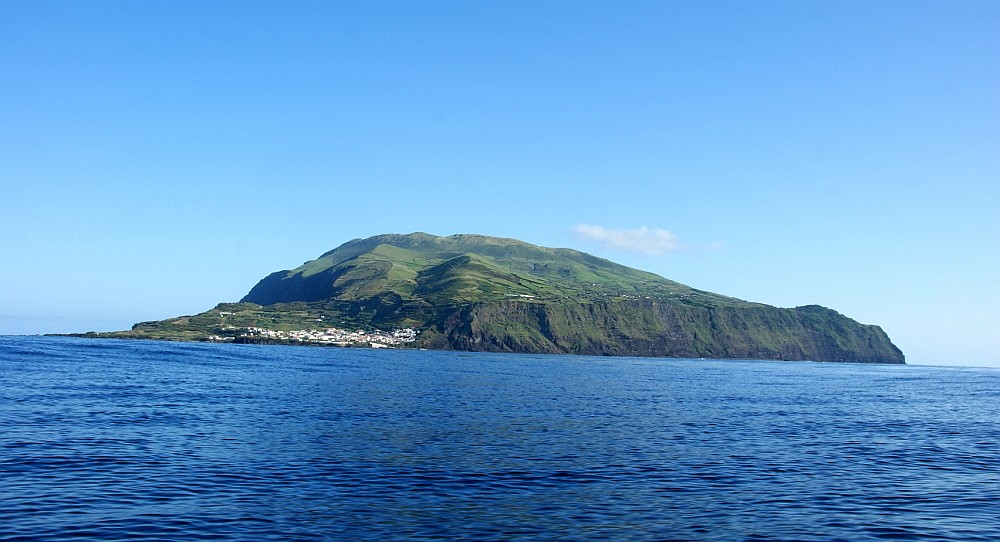

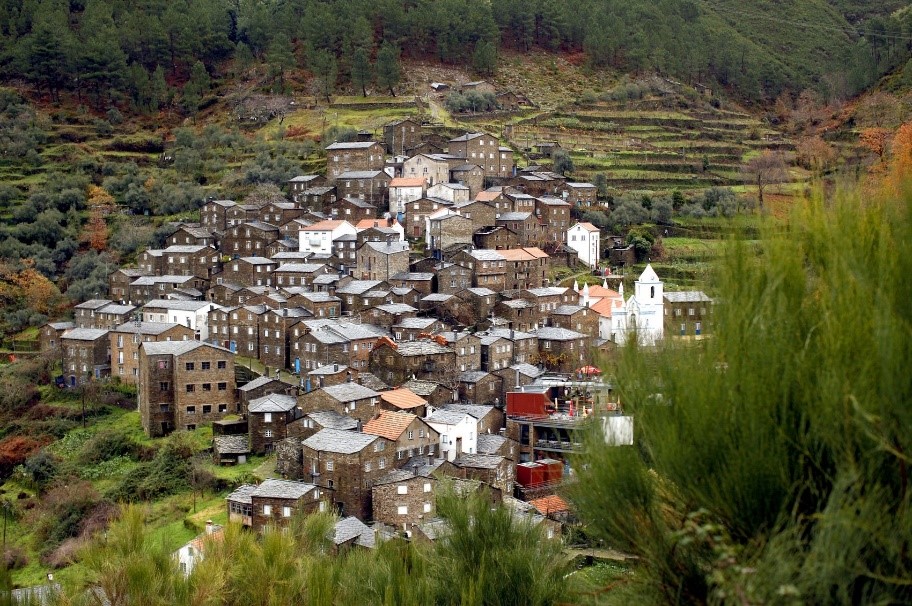


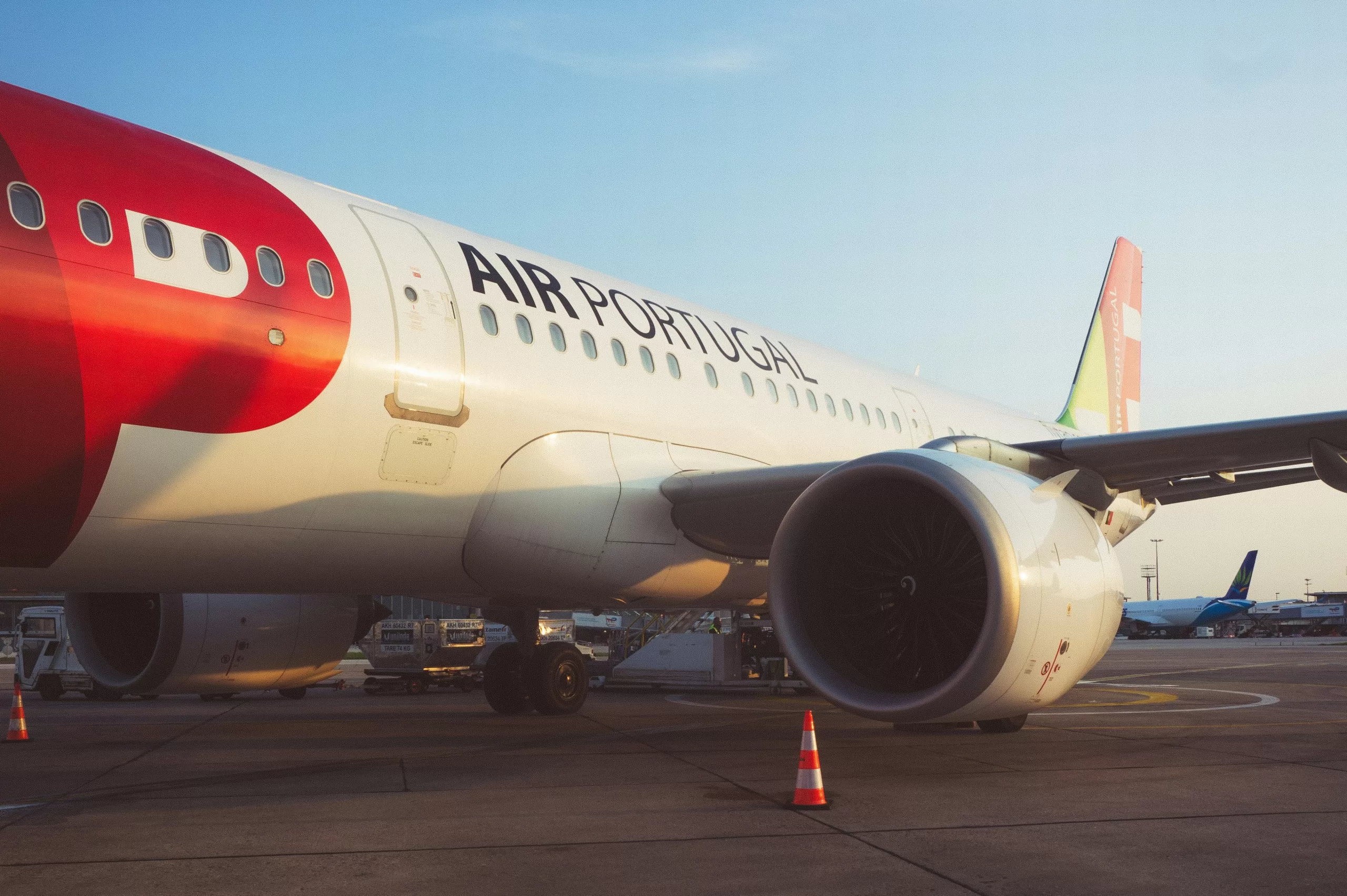
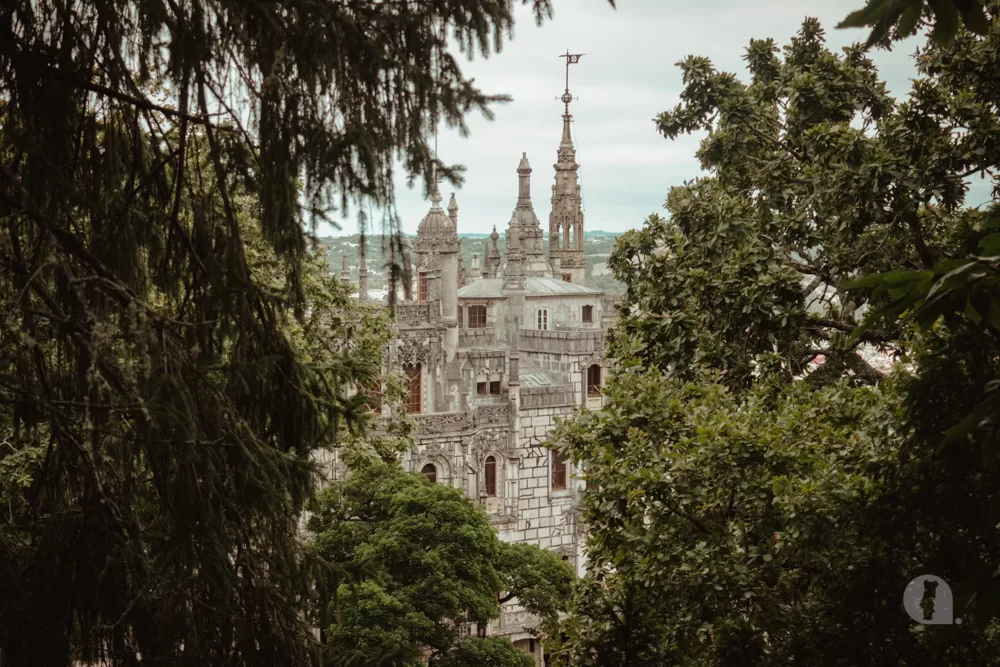
Ilda, those photos are breathtaking, wow I had no idea. You have convinced me! I love blue hydrangeas…looks so tropical & lush.